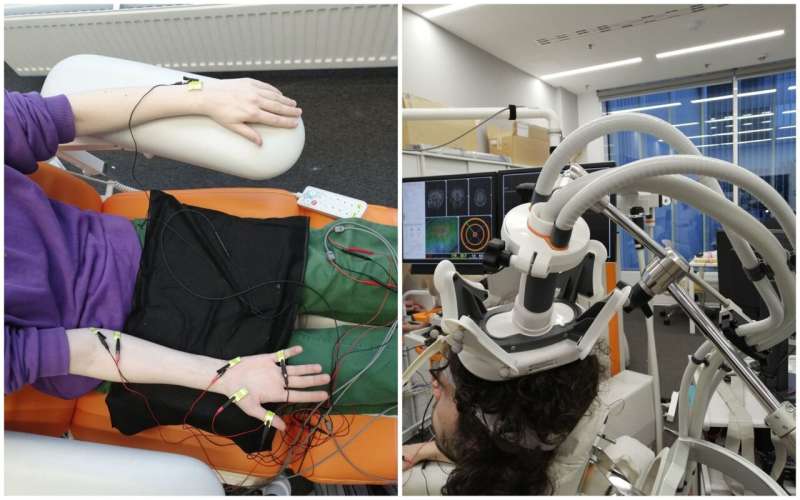This article has been reviewed according to Science X's editorial process and policies. Editors have highlighted the following attributes while ensuring the content's credibility:
fact-checked
peer-reviewed publication
trusted source
proofread
Tactile imagery increases corticospinal excitability, study finds

The ability to imagine is one of the key human cognitive functions. In a paper published in the Scientific Reports journal, researchers from Skoltech and Moscow State University investigated the effect of imagining tactile sensations (tactile imagery) on the excitability of the corticospinal tract using the transcranial magnetic stimulation method.
It has been shown that tactile imagery leads to an increase in corticospinal excitability. The practical importance of the results lies in the development of brain-computer interfaces based on mental images and tactile stimulation designed to improve neurorehabilitation by changing the plasticity in sensorimotor circuits.
Among the leading authors of the study are Ph.D. student Marina Morozova, who studies Life Sciences, and MSc alumna Aigul Nasibullina, who also specializes in Life Sciences.
The imagination of sensations associated with movements—motor imagery—has been studied for quite a long time. It is known that workouts based on mental motor representation contribute to motor learning, so they are used in the training of athletes, musicians, dancers, as well as in the rehabilitation of motor disorders.
One of the indicators proving the effectiveness of imagery is the excitability of the corticospinal tract. At the same time, the imagery of tactile sensations in general, unrelated to movements, has not been studied, and little is known about its effect on excitability.
It was shown that in both types of imagery—both motor and tactile—the excitability increased compared to the rest state. At the same time, excitability in motor imagery was expected to be higher than in tactile imagery.
The results highlight the importance of the functional and anatomical connection between the motor and somatosensory parts of the cortex, as well as reveal the potential of imagery-based training for the rehabilitation of sensorimotor disorders.
"The study participants had to take turns performing a task to imagine movements and tactile sensations in their right hand. At this time, with the help of transcranial magnetic stimulation, single magnetic stimuli were applied to the area of the primary motor cortex (the area responsible for controlling the muscles of the limb), causing muscle contraction.
"Based on the size of a muscle response, we concluded about the functional state of the pathway that the team follows from the cerebral cortex through the spinal cord to the muscles (excitability of the corticospinal tract/corticospinal excitability)," said Lev Yakovlev, a study co-author and a senior researcher at the Skoltech Neuro Center.
More information: Marina Morozova et al, Tactile versus motor imagery: differences in corticospinal excitability assessed with single-pulse TMS, Scientific Reports (2024). DOI: 10.1038/s41598-024-64665-6





















